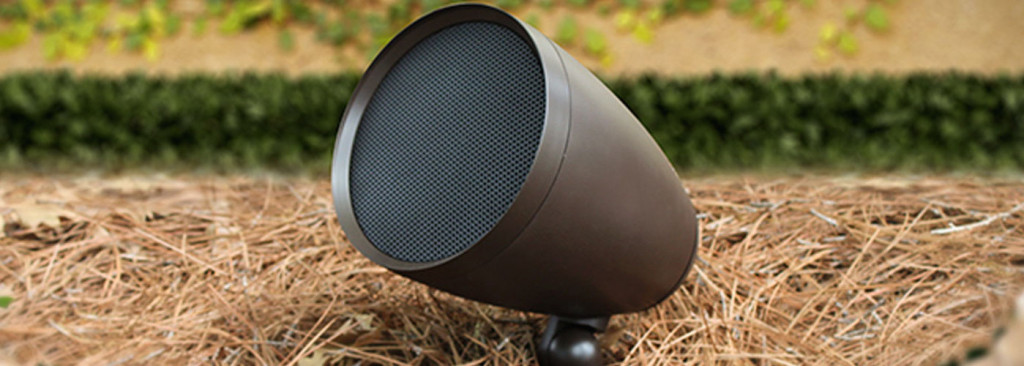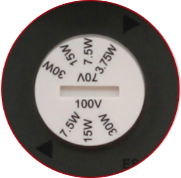 With the weather warming, its fitting to review options for landscaping and outdoor speaker wiring. A outdoor speaker system can compliment your outdoor living and entertaining. There are two types of systems that are available: conventional and 70 volt systems. The one that is right for you depends on your outdoor plan.
With the weather warming, its fitting to review options for landscaping and outdoor speaker wiring. A outdoor speaker system can compliment your outdoor living and entertaining. There are two types of systems that are available: conventional and 70 volt systems. The one that is right for you depends on your outdoor plan.
You might be familiar with conventional systems, as this is what is used in most homes. Conventional speakers and amplifiers are rated at different impedances, so take care that the speaker load (or impedance) is matched to the amplifier. If its implemented wrong, the amplifier can be overloaded and damaged. Often amplifiers will allow a range, e.g. 4-8 ohms, so you can use one set or two sets of speakers wired in parallel with no issues (wiring two 8 ohm speakers in parallel make them look like 4 ohms to an amplifier). Otherwise you’ll need to use multiple amplifiers. Amplifiers will specify rated wattage for each impedance, e.g. 50W at 8 ohms. For long speaker wires, like the ones used in large yards, the load of the wire itself adds up, so conventional systems are not suited when using very long speaker wires.
You may not have never heard of 70 volt (or 70V) systems, as they are usually associated with commercial buildings. (We use 70V in North America, but other regions of the world use 100V.) Don’t worry, as they don’t need to sound tinny like in a big box store. You can get great sounding 70V speaker systems – many restaurants and bars use 70V systems. The physics of higher voltages means that long speaker wires are much less of an issue  at 70V, so you can run very long wires if needed. The 70V is stepped down to regular speaker voltage by the speaker, and on most 70V speakers, you can choose the wattage. By setting the wattage, you set the relative volume at each speaker to manage how loud each is throughout your yard. You also need to be aware of overloading a 70V amplifier; its calculated by adding up all your speaker wattage settings and then adding 20% for good measure.
at 70V, so you can run very long wires if needed. The 70V is stepped down to regular speaker voltage by the speaker, and on most 70V speakers, you can choose the wattage. By setting the wattage, you set the relative volume at each speaker to manage how loud each is throughout your yard. You also need to be aware of overloading a 70V amplifier; its calculated by adding up all your speaker wattage settings and then adding 20% for good measure.
To help even out music volume throughout your yard, you should use multiple speakers instead of a couple blaring from one spot.  Its best to alternate left and right conventional speakers
Its best to alternate left and right conventional speakers
throughout your space, so all locations get the full music. 70V systems are usually mono, so you don’t need worry about lefts and rights. Both systems have various speaker styles: in-ceiling, box, faux rocks, etc, and they even have sub woofers if you need more bass in you life.
Sound diffuses easy outdoors with even the wind changing performance, so its difficult to get precise sound outdoors. That said, either system will provide great background music. The cost and complexity breakpoint for implementing a 70V system is when you want many speakers, e.g. 5 or more, and/or have a large space that requires long speaker wire runs. Once you have decided on your outdoor speaker system, you just connect music regular music sources like Sonos players to get ready for outdoor tunes.
